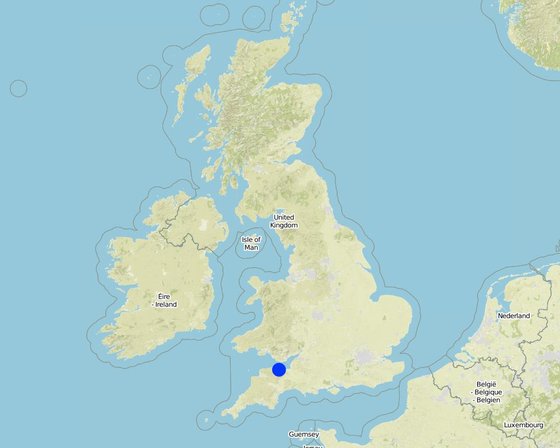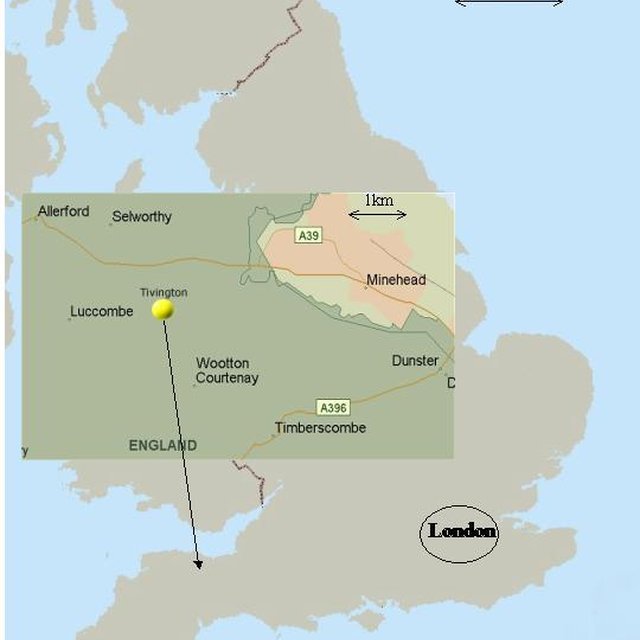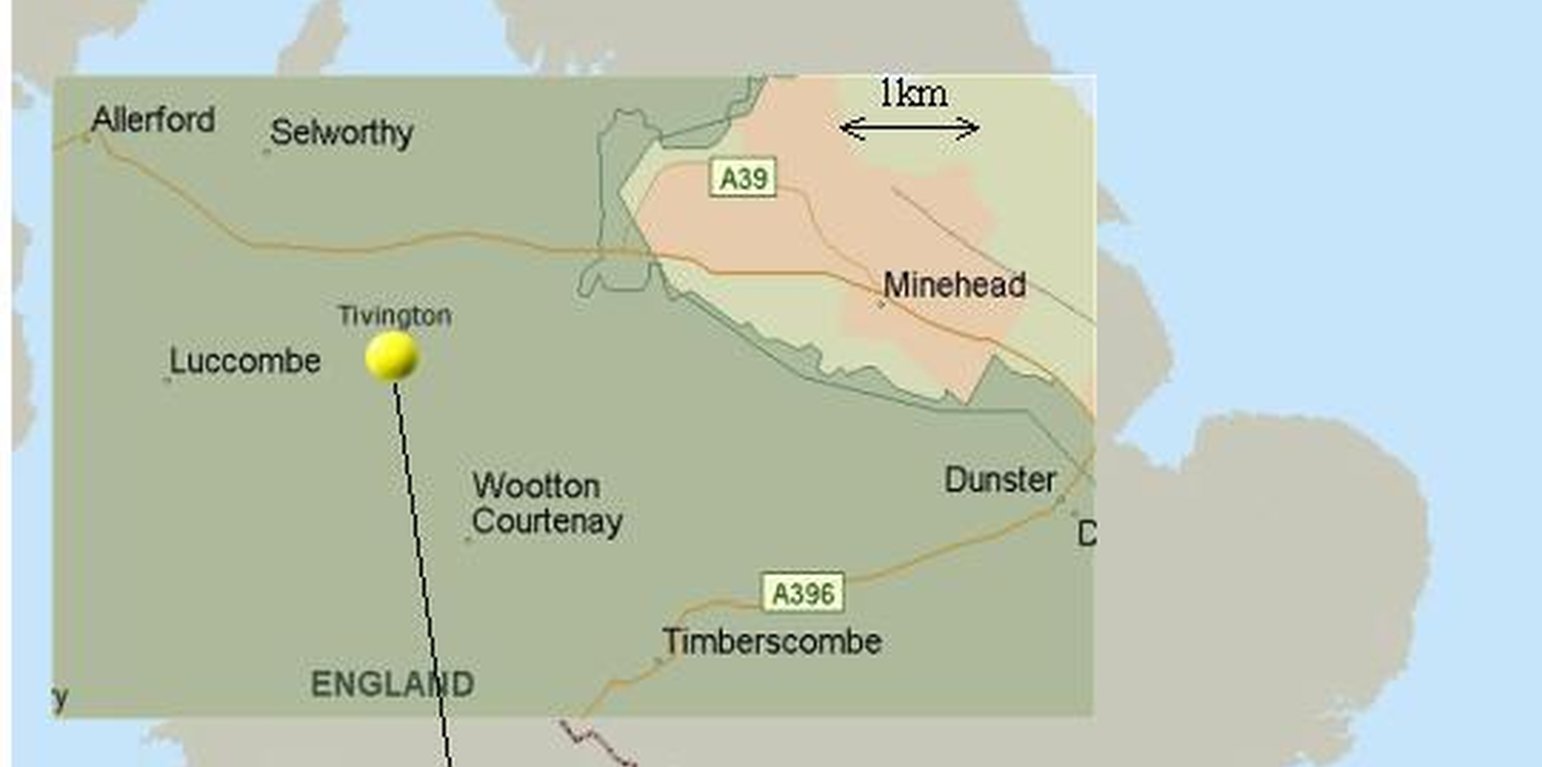Individual experimental farmer: Tivington
(United Kingdom)
Description
Individual farmer experimenting with machinery to maintain economic viability and reduce time spent on land preparation.
Aims / objectives: Maintain economic viability; to reduce the time spent working the soil; set up business with a neighbouring farmer.
Methods: Experimentation with different machinery, seeking information from various sources (agricultural shows, demonstrations, discussions).
Stages of implementation: Experimentation with machinery and collection of information over 3-4years; merger of farm business with neighbour having taken agronomic and financial advice; joint venture set up in 2002 and new machinery bought.
Location

Location: Somerset, United Kingdom
Geo-reference of selected sites
Initiation date: n.a.
Year of termination: n.a.
Type of Approach
-
traditional/ indigenous
-
recent local initiative/ innovative
-
project/ programme based

UK map showing location of Tivington farm.
Approach aims and enabling environment
Main aims / objectives of the approach
The Approach focused mainly on other activities than SLM (economic viability)
To find appropriate machinery, farming system and business model for economic viability
The SLM Approach addressed the following problems: Economic viability.
Conditions enabling the implementation of the Technology/ ies applied under the Approach
Conditions hindering the implementation of the Technology/ ies applied under the Approach
-
Social/ cultural/ religious norms and values: Local tradition to plough land on set date
Treatment through the SLM Approach: Willingess to try new techniques and not get discouraged by failure
-
Availability/ access to financial resources and services: cost of new machinery
Treatment through the SLM Approach: Willingness to use and adapt existing machinery. Formation of joint venture with neighbouring farmer
-
Knowledge about SLM, access to technical support: Lack of local technical knowledge and advice.
Treatment through the SLM Approach: Sought information from a variety of sources eg agricultural shows, machinery manufacturers
Participation and roles of stakeholders involved
Stakeholders involved in the Approach and their roles
Involvement of local land users/ local communities in the different phases of the Approach
Decision-making on the selection of SLM Technology
Decisions were taken by
-
land users alone (self-initiative)
-
mainly land users, supported by SLM specialists
-
all relevant actors, as part of a participatory approach
-
mainly SLM specialists, following consultation with land users
-
SLM specialists alone
-
politicians/ leaders
Decisions were made based on
-
evaluation of well-documented SLM knowledge (evidence-based decision-making)
-
research findings
-
personal experience and opinions (undocumented)
Technical support, capacity building, and knowledge management
The following activities or services have been part of the approach
-
Capacity building/ training
-
Advisory service
-
Institution strengthening (organizational development)
-
Monitoring and evaluation
-
Research
Monitoring and evaluation
bio-physical aspects were ad hoc monitored through observations
technical aspects were ad hoc monitored through observations
economic / production aspects were ad hoc monitored through observations
There were no changes in the Approach as a result of monitoring and evaluation
Financing and external material support
Annual budget in USD for the SLM component
-
< 2,000
-
2,000-10,000
-
10,000-100,000
-
100,000-1,000,000
-
> 1,000,000
Precise annual budget: n.a.
The following services or incentives have been provided to land users
-
Financial/ material support provided to land users
-
Subsidies for specific inputs
-
Credit
-
Other incentives or instruments
Impact analysis and concluding statements
Impacts of the Approach
No
Yes, little
Yes, moderately
Yes, greatly
Did the Approach help land users to implement and maintain SLM Technologies?
Reduction in soil erosion
Did the Approach empower socially and economically disadvantaged groups?
low - not appropriate for local conditions
Main motivation of land users to implement SLM
Sustainability of Approach activities
Can the land users sustain what hat been implemented through the Approach (without external support)?
Conclusions and lessons learnt
Strengths: land user's view
Strengths: compiler’s or other key resource person’s view
-
Self-starter (How to sustain/ enhance this strength: provision of external advice and knowledge to continue progress)
Weaknesses/ disadvantages/ risks: land user's viewhow to overcome
-
Too much trial and error
Better provision of advice and knowledge
Weaknesses/ disadvantages/ risks: compiler’s or other key resource person’s viewhow to overcome
-
Dependent on the individual
Encourage farmers to work together. Farmer to farmer training
References
Date of documentation: Jan. 12, 2009
Last update: June 25, 2017
Resource persons
-
Ceris A. Jones (cjones@agronomica.org) - SLM specialist
-
A.J. Calitz (calitzaj@email.com) - SLM specialist
Full description in the WOCAT database
Documentation was faciliated by





